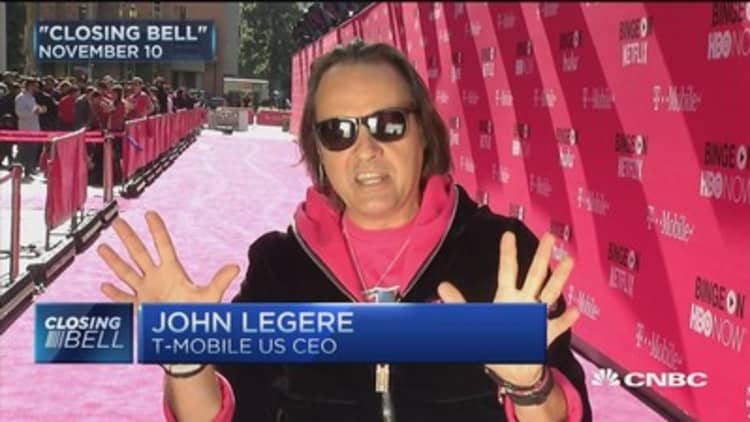As the morning rain dripped in the garden outside, the yoga teacher Aparajita Jamwal got down on one knee, stretching the other leg behind her in a lunge known as the equestrian pose.
"Imagine you're a horse — you have a lovely mane flowing behind you — looking up towards the ceiling," Ms. Jamwal urged in a soothing voice. "Take two more breaths here." As she slid her body into a plank pose, the director yelled, "Cut!" and everyone took a five-minute break.
Rajshri Entertainment, the creator of this low-budget yoga instructional video, is one of the oldest players in India's film industry, known as Bollywood.
While Rajshri still makes and distributes movies at the cinema, it also produces 200 minutes of web-only video a day. The company says that the future lies in such straight-to-digital content, which it offers free to consumers on YouTube and similar services, paid for by advertising.
The 13-part series starring Ms. Jamwal, a brand development consultant who teaches yoga on the side, will be released in January on the Mind Body Soul channel that Rajshri has on YouTube.
Unlike in the United States — where tens of millions of people pay to subscribe to streaming services like Netflix and customers routinely buy digital movies and shows on iTunes and Amazon.com — free video is the norm in India. That makes it difficult for content creators and networks to profit from streaming and download services.

Although about a dozen local and foreign companies hope to persuade Indians to pay for online video, changing current habits will be difficult.
In India, piracy is pervasive, Internet connection speeds are pokey, and thousands of full-length movies and TV episodes are legally available for free. Cable and satellite TV subscriptions cost just $2 or $3 a month, which makes paying just 50 cents for a movie seem expensive.
Even if someone wants to buy a show, most people lack credit cards, and there is no established alternative for digital purchases. And roughly half of mobile viewing is done on pay-per-megabyte data plans from cellphone companies, which adds an extra cost to video viewing.
"The Indian consumer is just not willing to pay for content," said Rajjat A. Barjatya, Rajshri's chief executive, in an interview at the studio's Mumbai offices a few days before the August yoga shoot.
Mr. Barjatya said his company still brought in cinema revenue from the first few days of a film's release, but Rajshri increasingly relies on ads sold around its library of 100,000 online videos, which include children's cartoons, religious videos and behind-the-scenes interviews with movie stars.
Despite the challenges of making money in India's video market, several American companies have decided they need to be there.

In February, 21st Century Fox, which owns many of India's most popular television channels through its Star India unit, began offering free online access to delayed sports broadcasts and hundreds of movies and TV shows through a website and mobile app called Hotstar.
About 35 million people have downloaded the app, and the average user spends about 30 minutes a day on it, the company said.
Amazon, which is competing aggressively in India's online retail market, intends to offer a version of its Prime service in the country soon, bundling unlimited shipping and video streaming together for one flat fee.
Next year, Netflix plans to extend its service to India as part of a broader global expansion.
All of them will have to contend with Google's YouTube, the dominant online video service, which has operated in India since 2007 and has set consumer expectations for video here.
Early on, YouTube persuaded Bollywood studios and TV networks to put material on the service free.
In India, "there are no reruns of old shows," explained Gautam Anand, YouTube's director of content and partnerships for Asia, in a video interview from Singapore. "We convinced them there was value in a lot of that content that was just sitting there, and if they made it available, people would watch it."
Some Indian YouTube channels now have millions of followers, and the company says the total number of hours watched has been growing 80 percent annually. YouTube recently began allowing Indians to download and store clips for later viewing.

YouTube shares the revenue from advertising around the clips, giving content creators a way to earn a bit of money, although ad rates are low — from about $1 to $4 per 1,000 viewers reached, or roughly one-tenth the rate in the United States.
YouTube has also trained Indian viewers to believe that video should be free, making it difficult for anyone else to charge a fee.
Eros International, one of Bollywood's most prolific studios, was among the first to challenge the YouTube model. In 2014, it introduced a streaming service called Eros Now, which offers access to Eros-owned films as well as licensed content.
More from the New York Times:
'Masaan' and Other Indian Films Steer Away From BollywoodEscapism
In 'Quantico,' Bollywood's Priyanka Chopra Seeks an AmericanFoothold
YouTube Introduces YouTube Red, a Subscription Service
With an extensive free tier of videos, supported by ads, the company says that Eros Now has attracted about 30 million registered users. But Eros has been tinkering with premium options — including original, made-for-streaming dramas that will begin streaming in January — that it hopes will attract a paying audience in India and abroad.
For an extra 50 to 100 rupees a month, or about 75 cents to $1.50, customers in India can access more videos and watch high-definition, ad-free streams. (Overseas subscribers have to pay $8 a month for the premium version.) In December, Eros will also begin allowing paid subscribers to download videos for later viewing.
"The Indian consumer is willing to pay for more than we give them credit for," said Jyoti Deshpande, chief executive of Eros, in a recent interview at the company's Mumbai offices.
Ms. Deshpande said Eros expected that within five to seven years, at least half of the company's revenues will come from streaming.
"We think this is a game-changer for us," she said. "Think of these next three years as a land grab."
The strategy is not without risks for the company, whose stock is traded on the New York Stock Exchange. Last month, an anonymous analyst on the investment site Seeking Alpha questioned the company's accounting practices and prospects, sending its shares plunging.
In an email, Ms. Deshpande said the drop was a result of "panic and fear mongering."
"Business has never been stronger," she wrote.
Like Eros Now, Star India figures that its exclusive, local-language content and broadcasts of popular sports like cricket will eventually attract paying users to its streaming service.
Right now, however, Hotstar is entirely free. Although about 100 advertisers help pay the bills, most of the company's Indian revenue comes from its Star television channels, so it can afford to be patient, said Sanjay Gupta, the chief operating officer of Star India.
"We are building the habit of viewers to start consuming content on our platform," he said.
Getting access to exclusive, Indian-language video has been a hurdle for the retailer Amazon, which has spent months studying how to offer its Prime service in India, its largest market after the United States, with an estimated 50 million customers.
Amazon has also struggled to figure out how to deliver quality video at the low connection speeds prevalent in India.
"In the absence of high-bandwidth connections, it becomes difficult to provide a good customer experience," said a person with knowledge of Amazon's India plans, who spoke on condition of anonymity.
The retailer is considering several solutions to the bandwidth problem and intends to introduce the Prime service within the next few months, this person said.
Meenu Handa, an Amazon spokeswoman, declined to comment on the company's plans.
Ultimately, it will be a long time before streaming video in India becomes a significant business for anyone, predicted Colin Sebastian, an Internet analyst with Robert W. Baird & Co., who has studied the Indian market.
"The amount of money to be made is very small," Mr. Sebastian said.



